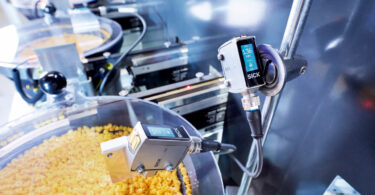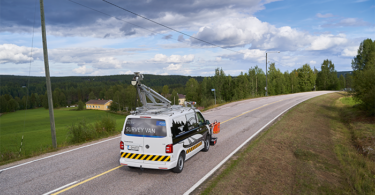Different automated vehicles perform different tasks for manufacturers…but what are AGVs and AMRs and how do you know which one to use?
As the manufacturing and material handling industries continuously changes to meet customer needs or environmental circumstances, the use of automated vehicles has never been more popular. Automated vehicles increase efficiency, safety, and productivity.
These vehicles are used to transport materials or accomplish more basic and mundane tasks in many different industrial settings. When performed by a human worker, these tasks can often take longer and may not necessarily be the best use of their time. With automated vehicles, you can assign workers to more high-value tasks. But what exactly are the different types of automated vehicles?
History of Automated Vehicles
First invented in the 1954 by Arthur “MAC” Barrett, Jr., automated guided vehicles (AGVs) were first used in grocery warehouses and automotive assembly plants. The vehicles followed overhead wires instead of optical lines like they do today.
Eventually, AGVs evolved into the manufacturing work stream as unit load carts, tow carts, and counterbalanced trucks. And now are used in most warehousing and distribution settings to increase productivity. The safety and productivity of these vehicles increased over the years.
Since then, the use of automated vehicles has dramatically expanded to also include Automated Guided Carts (AGCs), Autonomous Mobile Robots (AMRs), and Industrial Mobile Robots (IMRs). With all these acronyms being thrown around, it can get real confusing exactly what makes something an AGV instead of an AMR. We’re here to clear some things up for you!

What is an Automated Guided Vehicle (AGV)?
An AGV is the first type of automated vehicle we’re tackling. It moves around a facility using a pre-programmed guidance system. Some are guided by lasers, but fixed path AGVs are more common. An AGC, as mentioned previously, is a type of an AGV. It is simply an AGV that is intended for lighter loads as it has a small chassis and lower profile.
Laser guided AGVs use mounted laser scanners to navigate. It uses the time-of-flight principle from laser scanners, where the scanners emit a laser onto a target and reflects it back. Based on the amount of time it takes the reflection to return, the AGV can determine target distance. It orients itself in relation to its distance from the target.
Fixed path systems use an embedded wire, magnetic tape, or colored paint as a guide for very simple vehicle routes. The AGV is equipped with sensors and frequencies that respond to the wire or tape and allow it to follow a path. These simple systems can be quite accurate and reliable, although they do not allow for the flexibility that some applications may require.
An AGV can detect obstacles in front of it, but it is not able to navigate around them, so it simply stops in its tracks until the obstacle is removed.
What is an Autonomous Mobile Robot (AMR)?
An AMR has more capabilities than an AGV. It is capable of free movement and can navigate more freely around a facility. In contrast to AGVs, AMRs navigate using maps of its environment that are loaded using various software. Sensors are also used to ensure safety and reliability of the AMR. It guides the AMR using a computer-based program that communicates with the onboard microprocessor and control system. This programming translates into controlled and adjustable movement.
Like an AMR, the term Industrial Mobile Robot (IMR) was introduced in the recent safety standard ANSI/RIA R15.08. The term IMR has not reached broad usage in industry, but it may emerge to replace the term AMR in the future.

Similarities and Differences of AGVs and AMRs
There are a few similarities between AGVs and AMRs. Both have the ability to avoid collisions with potential obstacles in a facility. They are often used to move material from one point to another within a facility. In addition, both can operate collaboratively and safely with humans. But there are a number of differences between the two types of automated vehicles.
For example, AGVs typically:
- Have simpler control system and sensors than an AMR
- Are considered a less expensive solution than an AMR
- Use fixed infrastructure like magnetic tape/wire, painted lines, QR code stickers, or laser targets to move within a facility
- Can only remain within the confines of operations lanes/paths
- Can be designed to carry extreme payloads
- Cannot navigate around obstacles and instead just stops in front of it, often requiring a restart to continue
- Work well in material handling settings or more controlled environments.
And AMRs typically:
- Can freely navigate around facility
- Navigate a path between a starting point and a destination
- Can operate outside of a building
- Can follow humans around a facility in a “follow me” application
- Not only avoid obstacles, but actively navigate around obstacles
- Can become “lost” if it can’t recognize its surroundings, requiring machines to stay localized
- Work well in any environment, but excels in unstructured environments, especially interacting with humans
Want to learn more about the differences between AGVs and AMRs and mobile robots? Check out our blog for more information and contact a SICK representative today!





